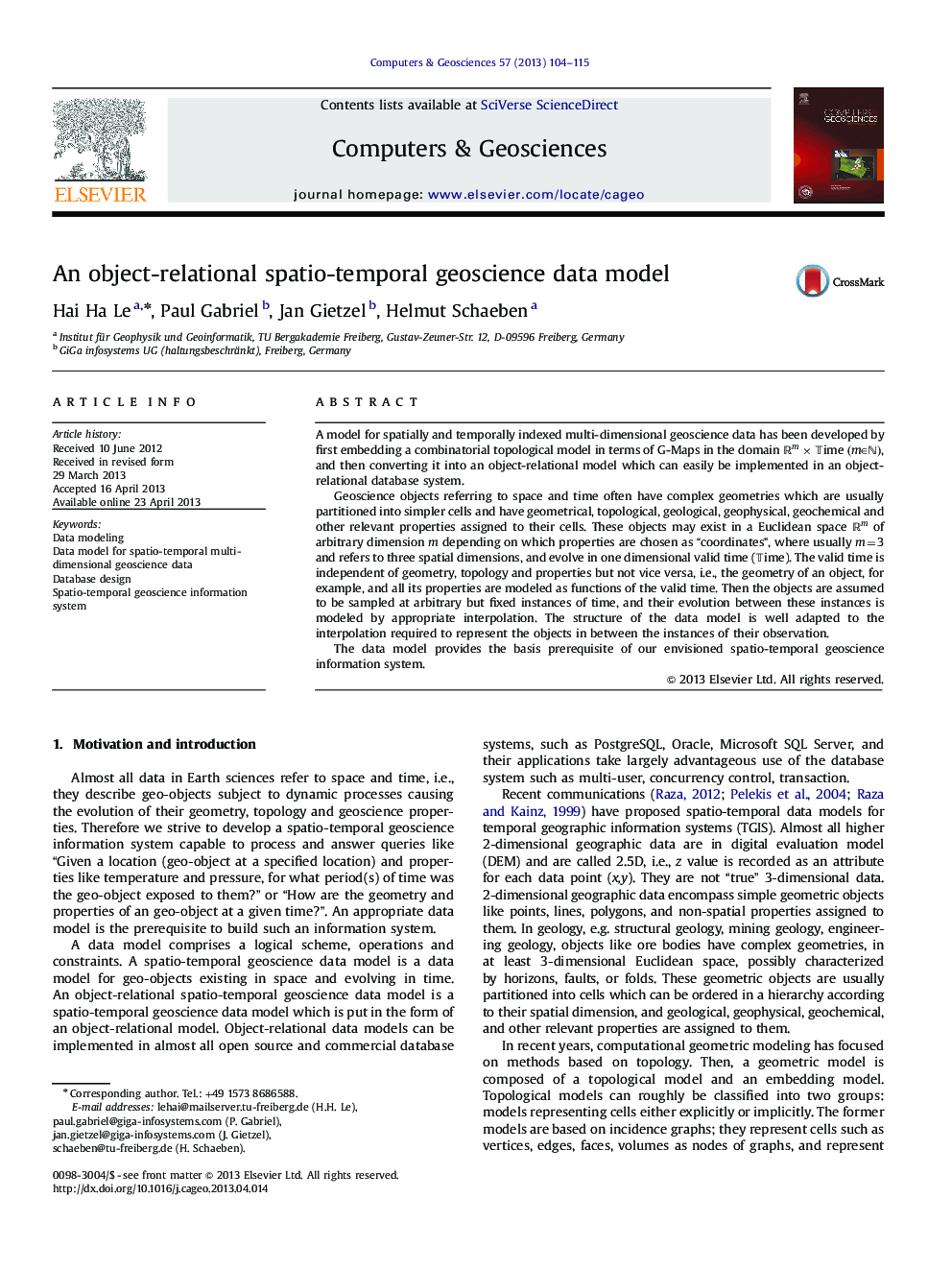| Article ID | Journal | Published Year | Pages | File Type |
|---|---|---|---|---|
| 507479 | Computers & Geosciences | 2013 | 12 Pages |
A model for spatially and temporally indexed multi-dimensional geoscience data has been developed by first embedding a combinatorial topological model in terms of G-Maps in the domain Rm×TimeRm×Time(m∈N)(m∈N), and then converting it into an object-relational model which can easily be implemented in an object-relational database system.Geoscience objects referring to space and time often have complex geometries which are usually partitioned into simpler cells and have geometrical, topological, geological, geophysical, geochemical and other relevant properties assigned to their cells. These objects may exist in a Euclidean space RmRm of arbitrary dimension m depending on which properties are chosen as “coordinates”, where usually m =3 and refers to three spatial dimensions, and evolve in one dimensional valid time (TimeTime). The valid time is independent of geometry, topology and properties but not vice versa, i.e., the geometry of an object, for example, and all its properties are modeled as functions of the valid time. Then the objects are assumed to be sampled at arbitrary but fixed instances of time, and their evolution between these instances is modeled by appropriate interpolation. The structure of the data model is well adapted to the interpolation required to represent the objects in between the instances of their observation.The data model provides the basis prerequisite of our envisioned spatio-temporal geoscience information system.
• We develop a new model for spatio-temporal data in the Earth sciences.• The data model is in the form of an object-relational model.• The data model is based on a combinatorial topological model in terms of G-Maps.• Topology, geometry and geosciences properties are represented by functions of time.• The data model is well adapted to represent the objects in between the instances.
